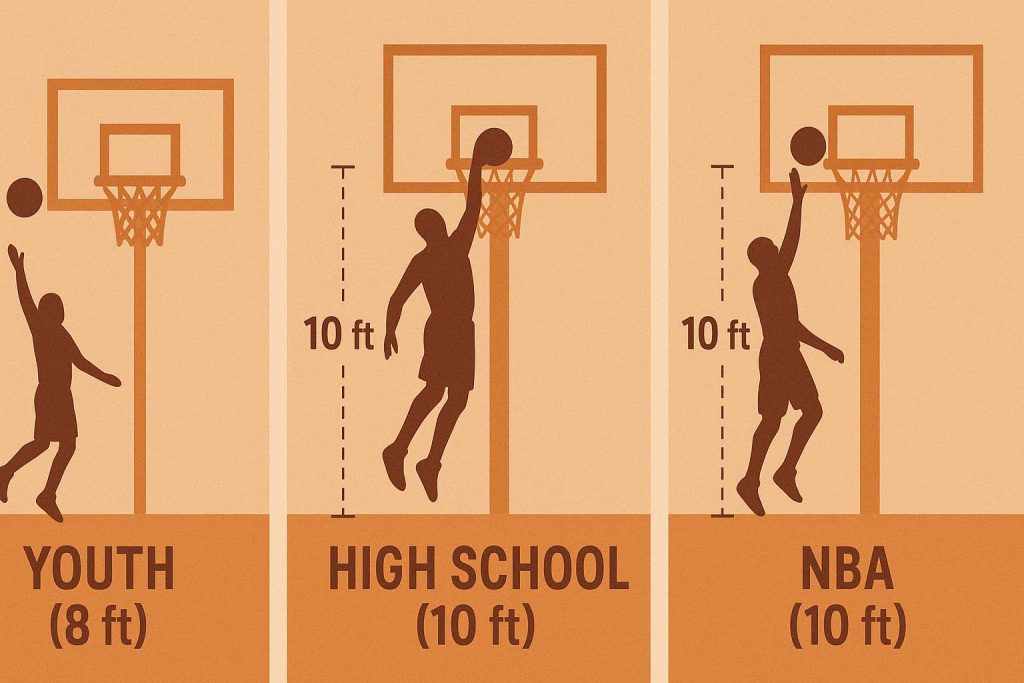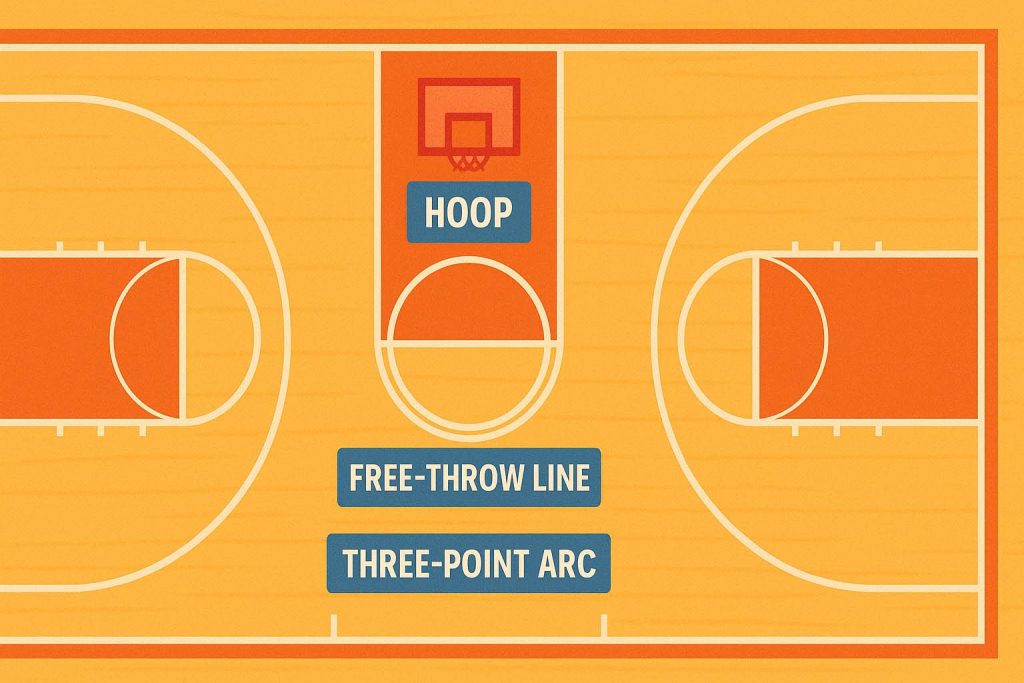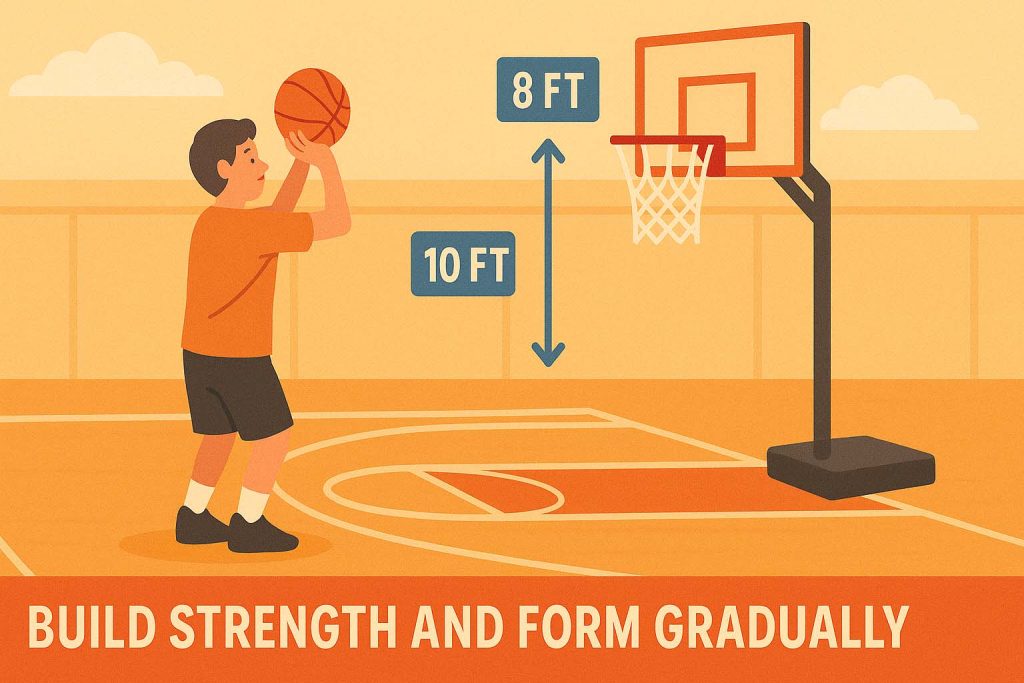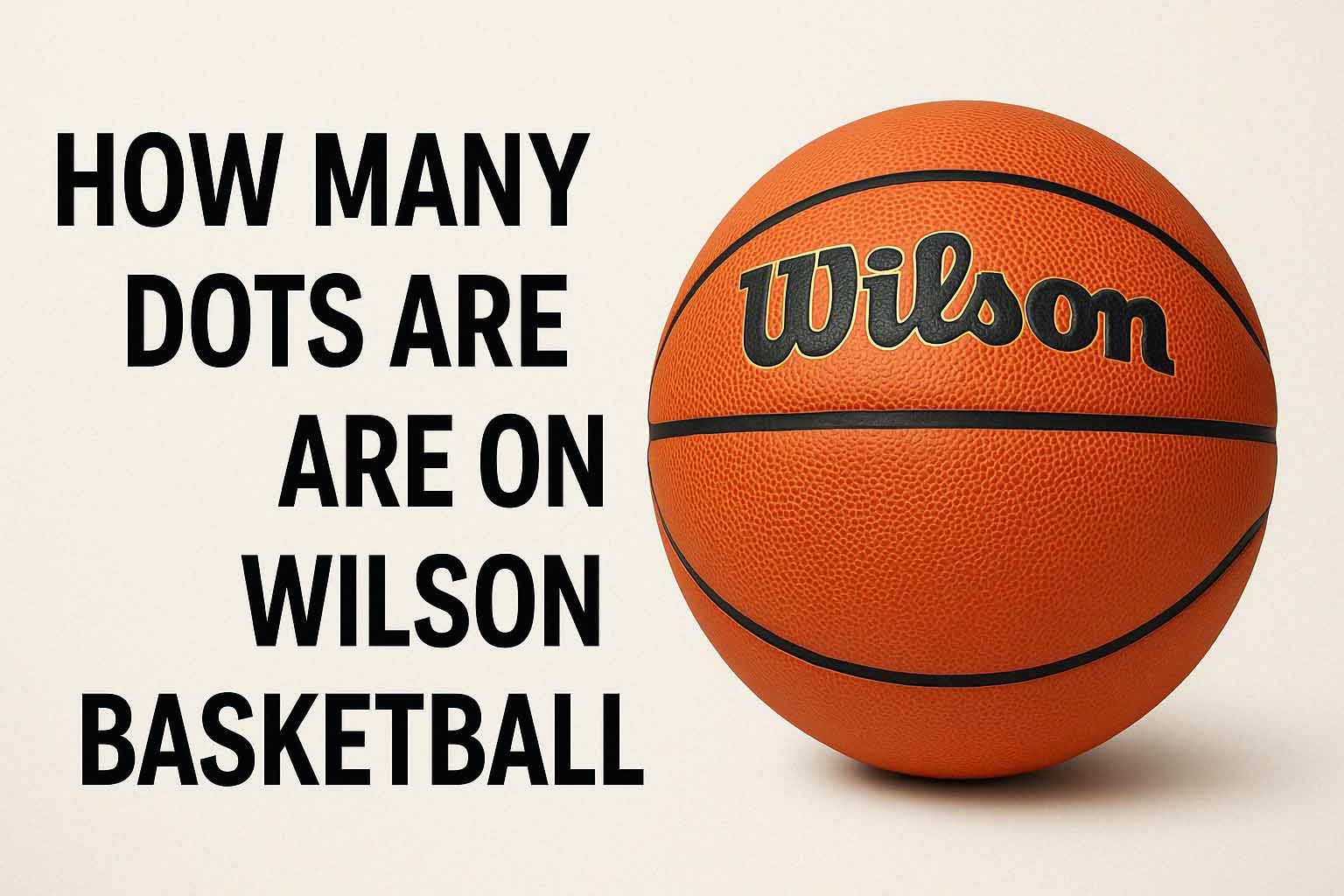If you’ve ever stood courtside at a high school basketball game, you’ve probably noticed just how high that rim looks—especially when someone throws down a dunk or sinks a deep three-pointer. And if you’re a player, parent, or even just a curious fan, you might find yourself asking: What is the actual height of a high school basketball hoop?
I remember the first time I walked into a high school gym and looked up at the backboard. I was just a kid, clutching my slightly-too-big basketball, convinced that hoop touched the clouds. Years later, I learned that the height was the same as in the NBA—which blew my mind. That’s right: high school players shoot on the same 10-foot hoops as the pros do.
Understanding hoop height isn’t just trivia—it’s key to training, competition, and even court design. Whether you’re coaching youth players making the leap to regulation height or setting up a hoop at home, knowing these standards can make a big difference.
In this guide, I’ll walk you through everything you need to know about the height of a high school basketball hoop. From official measurements to how it compares with other levels, I’ve included all the facts (plus a few handy tables) to give you the full picture.
Contents
- 1 What Is the Standard Height of a High School Basketball Hoop?
- 2 How Does the High School Hoop Height Compare to Other Levels?
- 3 Does Hoop Height Ever Vary in High School Games?
- 4 Safety and Equipment Standards for High School Hoops
- 5 How Hoop Height Affects Player Development
- 6 FAQ Section
- 7 Final Thoughts
What Is the Standard Height of a High School Basketball Hoop?
When it comes to high school basketball, there’s no guesswork about the hoop height—it’s set at 10 feet, or 3.05 meters, from the floor to the rim. That’s the same height used in college basketball, the NBA, and even the WNBA.
This standard isn’t random—it’s defined and enforced by the NFHS (National Federation of State High School Associations), which governs most high school sports in the U.S. The goal is to ensure consistency across games, training sessions, and tournaments. So whether you’re watching a varsity game in Texas or Maine, the hoop height remains exactly the same.
I’ve been to countless high school gyms across the country, and no matter the size of the school or the state of the court, that 10-foot hoop is always waiting at the end of the hardwood. It’s one of those constants in the game that players learn to trust.

Here’s a quick table to show how hoop height compares across different levels of the game:
Comparison of Hoop Height Across Basketball Levels
| Level of Play | Hoop Height | Age Group/Typical Use |
| Youth (Beginner) | 6 to 8 feet | Ages 5–7; introductory level |
| Youth (Intermediate) | 8 to 9 feet | Ages 8–11; skill development stage |
| Middle School | 10 feet | Ages 12–14; regulation begins |
| High School | 10 feet | Ages 14–18; standard NFHS regulation |
| College (NCAA) | 10 feet | Ages 18+; consistent with pro level |
| Professional (NBA/WNBA) | 10 feet | Adult/professional leagues |
Why Is the High School Hoop 10 Feet Tall?
A Look Back at Basketball History
The 10-foot rule goes all the way back to 1891 when Dr. James Naismith invented basketball. He hung a peach basket on the railing of a gymnasium balcony at exactly 10 feet off the ground—not because of some deep scientific reasoning, but because that’s how high the balcony was.
That height just stuck. Over the years, as the sport grew and official rules were written, the 10-foot mark became the gold standard.
A Universal Standard
What’s wild is that this height has never changed—not for middle school, high school, college, or even professional basketball. From your school’s gym to Madison Square Garden, the rim is always 10 feet off the floor. That kind of consistency across levels helps players train effectively and smoothly transition from one level to the next.
Why It Matters for Skill and Fairness
Using the same hoop height across levels means players develop shooting skills, jumping ability, and timing without constantly adjusting to different measurements. It also ensures fairness in competition. A dunk at 10 feet is a dunk everywhere—it’s a shared challenge that connects players from grade school to the pros.
In my own coaching days, I’ve seen players light up when they finally make that first shot on a regulation hoop. It’s a rite of passage, and it builds confidence in a big way.
How Does the High School Hoop Height Compare to Other Levels?
Youth Basketball: Lower Hoops for Growing Players
If you’ve ever watched a group of 6-year-olds try to shoot on a 10-foot hoop, you know it’s not a pretty sight. That’s why youth basketball leagues often use lower rims to match kids’ physical development. These adjusted hoop heights help kids focus on proper shooting form instead of just heaving the ball as hard as they can.
Most beginner leagues set hoops between 6 and 8 feet high for kids under 8 years old. As players grow, so does the rim height—moving up to 8 or 9 feet by the time they reach 10 or 11 years old. This gradual increase helps ease young players into regulation play.
I’ve coached kids who used to struggle with an 8-foot hoop and are now confidently shooting on regulation rims. It’s amazing to see how this slow, age-based transition builds real skills and confidence.
College and NBA Levels: Still 10 Feet
Once players hit high school, they step into a world where the hoop never changes. College leagues like the NCAA and pro leagues like the NBA and WNBA all use the same 10-foot rim height. That means high school players who dream of going pro are already practicing on the real deal.
This consistency across levels is key to helping players progress smoothly through the ranks. It also helps fans compare performances across levels—whether it’s a college dunk or an NBA buzzer-beater, it’s all happening at the same height.
Recreational and Adjustable Hoops
At home or in community gyms, it’s common to see adjustable basketball hoops. These let players change the height from 7.5 to 10 feet—perfect for families with kids of different ages or for anyone looking to have a little fun.
I’ve had my fair share of backyard games where we lowered the hoop just a bit for epic dunk contests. Adjustable hoops make the game accessible and fun for everyone, no matter their skill level.
Here’s a quick breakdown of hoop heights by age and league level:
Hoop Height by Age Group and League
| Age Group | Recommended Hoop Height | Typical League or Setting |
| 5–7 years old | 6 feet | Beginner youth leagues, school PE classes |
| 8–10 years old | 8 feet | Recreational youth leagues |
| 11–12 years old | 9 feet | Middle grades, skill-building stage |
| 13+ years old | 10 feet | Middle school, high school, NCAA, NBA |
| Adults (Recreational) | 10 feet (adjustable) | Gyms, parks, community leagues |
Does Hoop Height Ever Vary in High School Games?
Exceptions for Training and Special Programs
In official high school games, the hoop height is always 10 feet—no exceptions. That’s part of the NFHS regulations, and it keeps everything fair and consistent.
But during training sessions or in inclusive programs, coaches might temporarily adjust the hoop. For example, some schools with junior varsity or co-ed programs for students with disabilities may use lower rims to keep things fun and accessible.
I’ve worked with adaptive basketball programs where we used an 8-foot hoop, and you could just see the joy on every player’s face when they made a basket. Those moments really show how powerful the game can be when everyone’s included.
Practice Drills with Modified Heights
In practice, some coaches lower the hoop slightly to help players build confidence, improve form, or work on vertical jump techniques. It’s especially useful for teaching proper dunking mechanics or encouraging guards to finish at the rim.
I’ve even seen shooting drills where players use an 11-foot hoop to challenge accuracy. Just like adding a heavier ball or narrowing the court, changing the hoop height can add a fun twist to training.
Temporary Setups vs. Regulation Games
It’s important to remember that any adjusted hoop is strictly for training or casual play. In actual high school games, the hoop must always be at the regulation 10-foot mark. Referees often double-check this before tipoff to ensure everything meets NFHS standards.
So while there’s room for flexibility in practice or unique programs, the game itself is played by the book.
High School Basketball Court Dimensions (And How the Hoop Fits In)Court Size, Free-Throw Line, and 3-Point Arc

When I walk into a high school gym, I always notice how the court feels more compact than a college or NBA arena. That’s because high school courts have their own set of dimensions, which balance well with teenage players’ speed and strength.
According to the National Federation of State High School Associations (NFHS), a standard high school court is 84 feet long and 50 feet wide. That’s a bit smaller than a college or professional court, which stretches to 94 feet.
The free-throw line is placed 15 feet from the backboard, just like in college and the pros. But the 3-point line is closer—only 19 feet, 9 inches from the hoop at the top of the arc. This distance helps encourage long-range shooting while still being realistic for high school athletes.
How the Hoop Fits into the Official Layout
The hoop is mounted exactly 10 feet above the floor and is centered on the baseline. The backboard sits 4 feet from the end of the court, with the hoop extending into the play area.
This setup creates the classic spacing that helps players work on layups, mid-range shots, and perimeter shooting within the flow of the game. Everything—from the free-throw line to the paint—is built around that 10-foot standard.
Here’s a visual breakdown to show how different court levels compare:
Court Dimensions from Middle School to NBA
| Level | Court Length | Court Width | 3-Point Line Distance | Free-Throw Line | Hoop Height |
| Middle School | 74 feet | 42 feet | Varies (shorter arc) | 15 feet | 10 feet |
| High School | 84 feet | 50 feet | 19 ft, 9 in | 15 feet | 10 feet |
| College (NCAA) | 94 feet | 50 feet | 22 ft, 1¾ in | 15 feet | 10 feet |
| NBA | 94 feet | 50 feet | 23 ft, 9 in | 15 feet | 10 feet |
This table shows how the court grows as players advance, but the hoop height stays the same—building a sense of consistency through every level.
Safety and Equipment Standards for High School Hoops
Backboard Size, Padding, and Breakaway Rims
Safety is a big deal in high school basketball, and it starts with the equipment. The NFHS basketball rules outline strict guidelines for hoop construction.
A regulation backboard is 72 inches wide and 42 inches high, made of tempered glass or shatterproof acrylic. Every backboard must have padding along the bottom and sides to prevent injuries during high-speed layups or blocks.
Then there’s the breakaway rim—a spring-loaded design that bends slightly under pressure. These rims help protect players from injury and prevent damage when someone dunks (or attempts to).
In one high school gym I visited, I saw an older-style rigid rim installed for practice. The players struggled with awkward bounces, and coaches worried about potential injuries. That moment showed me how vital modern, breakaway rims are in maintaining a safe and fair game.
Safety Rules Schools Must Follow
Every school must inspect their hoops before games and follow local athletic association rules. Loose bolts, worn padding, or outdated backboards can lead to serious injuries—and in competitive sports, safety should never be optional.
Organizations like the National Athletic Trainers’ Association (NATA) emphasize the need for routine maintenance checks to make sure all equipment is game-ready and safe.
Why Regulation Equipment Matters
Regulation hoops give players the right environment to grow their game. When everything’s up to code—from the rim height to the court layout—students can focus on skills without worrying about injuries.
It also prepares them for college-level play, where expectations and physicality ramp up. I’ve seen how players gain confidence simply because they know the gear they’re using meets professional standards.
How Hoop Height Affects Player Development

Shooting Mechanics and Vertical Jump
The 10-foot hoop may seem like a fixed number, but it plays a major role in how young players learn to shoot. At this height, proper shooting form becomes essential—there’s no way to succeed by chucking the ball or using only arm strength.
Players start learning how to use their legs, follow through, and control their shooting arc. The height also encourages athletes to build their vertical jump, which becomes important not just for dunking, but for rebounding, blocking shots, and finishing strong at the rim.
Transitioning from Lower to Regulation Hoops
For younger players moving up from 8- or 9-foot rims, that jump to 10 feet can feel huge. I always recommend a gradual transition, especially during off-season training.
When I coached a group of sixth graders making the leap, we spent weeks using an 8.5-foot hoop for technique, then bumped it up inch by inch until they were comfortable at 10 feet. That slow, step-by-step method helped prevent frustration and injuries.
Training Tips for Younger Players
If your child is preparing for the switch to a 10-foot hoop, here are some tips I’ve seen work wonders:
- Use a lighter ball at first to focus on form.
- Lower the hoop temporarily during drills, then raise it gradually.
- Incorporate strength exercises, especially for the legs and core.
- Film shooting form to identify any habits that need adjustment.
You can also check out resources like USA Basketball’s Youth Development Guide, which offers age-specific drills and advice for building skills the right way.
FAQ Section
Q1: Is the hoop height different for girls’ high school basketball?
Nope—it’s the same! In both boys’ and girls’ high school basketball, the rim stands exactly 10 feet (3.05 meters) off the ground.
The NFHS rules don’t separate hoop height by gender. This creates a consistent playing field, making it easier for athletes to train and compete at the same level. It also helps girls who aim to play college ball adjust more easily, since the standards stay the same throughout.
Q2: Can you adjust a high school basketball hoop?
Most regulation hoops used in official high school games are not adjustable. They’re bolted into the floor or mounted on stable support systems that meet safety standards.
However, some schools have adjustable practice hoops in their gyms. These are used mainly for training younger athletes or running drills that focus on accuracy and confidence. If you’re practicing at home, a portable or wall-mounted adjustable hoop can be great—just make sure to always return it to 10 feet when prepping for real games.
If you’re shopping for one, check out USA Basketball’s equipment guidelines for suggestions on age-appropriate hoops.
Q3: What if my school doesn’t have a regulation hoop?
If your school doesn’t use regulation hoops for games, that can be a big issue—especially for players aiming to compete at higher levels. Practicing on non-standard hoops may affect your shooting form, muscle memory, and depth perception.
Here’s what you can do:
- Talk to your coach or athletic director and see if there are plans to upgrade.
- Use nearby community gyms or sports centers with regulation hoops.
- Adjust your home setup, if possible, to match official dimensions.
I’ve met several players who trained off-site at local YMCAs or club gyms when their school facilities weren’t up to par. It takes effort, but it’s worth it.
Q4: At what age do players start using a 10-foot rim?
Most players start using a 10-foot hoop around age 12, especially in middle school. Before that, lower hoops are used to help kids build proper form and avoid bad habits like “chucking” the ball.
Here’s a general breakdown based on USA Basketball’s youth guidelines:
- Ages 5–7: 6-foot rim
- Ages 8–10: 8-foot rim
- Ages 11–12: 9-foot rim
- Ages 12+: 10-foot rim
The step-up should be gradual. I’ve worked with young players who transitioned over several months, mixing in strength training and form-focused drills to ease the switch.
Q5: How do I measure hoop height accurately?
It’s easier than you think! All you need is a measuring tape and a steady hand.
Here’s a quick method I’ve used many times:
- Place the end of the measuring tape on the playing surface (not the base if it’s a portable hoop).
- Extend the tape straight up to the top edge of the rim.
- Make sure it reads exactly 10 feet (120 inches) for regulation.
If the ground isn’t flat, it might throw off your reading—so always double-check. For official settings, use a laser measuring device, which many school staff or referees carry before game time.
Final Thoughts
After years of watching, coaching, and covering basketball, I can tell you—the 10-foot hoop isn’t just a number. It’s a symbol of the game’s consistency, fairness, and the foundation for developing real skill at every level. Whether you’re a high school player dreaming of college stardom or a parent setting up a driveway hoop, understanding this standard matters.
From youth leagues to the NBA, the height remains unchanged, which gives players a clear path to grow, train, and compete. And while younger kids need smaller hoops to learn the ropes, the goal is always to get them ready for that 10-foot challenge.
What stood out most to me over the years is how this simple height continues to push athletes. It sharpens shooting form, builds explosive power, and makes dunks that much more rewarding. But it also creates a level playing field—every player, every game, every court.
If you’re just starting out or supporting a young athlete, take it one step at a time. Focus on solid fundamentals, get familiar with official dimensions, and always aim high—literally and figuratively.
Have a question I didn’t cover? Drop a comment, share your story, or check out my other basketball breakdowns. I’d love to hear how the game has shaped your journey too.
Now go out and shoot your shot—it’s 10 feet away. You got this. 🏀
 Sports Daily Info All Things Sports, from News to Match Schedules
Sports Daily Info All Things Sports, from News to Match Schedules



